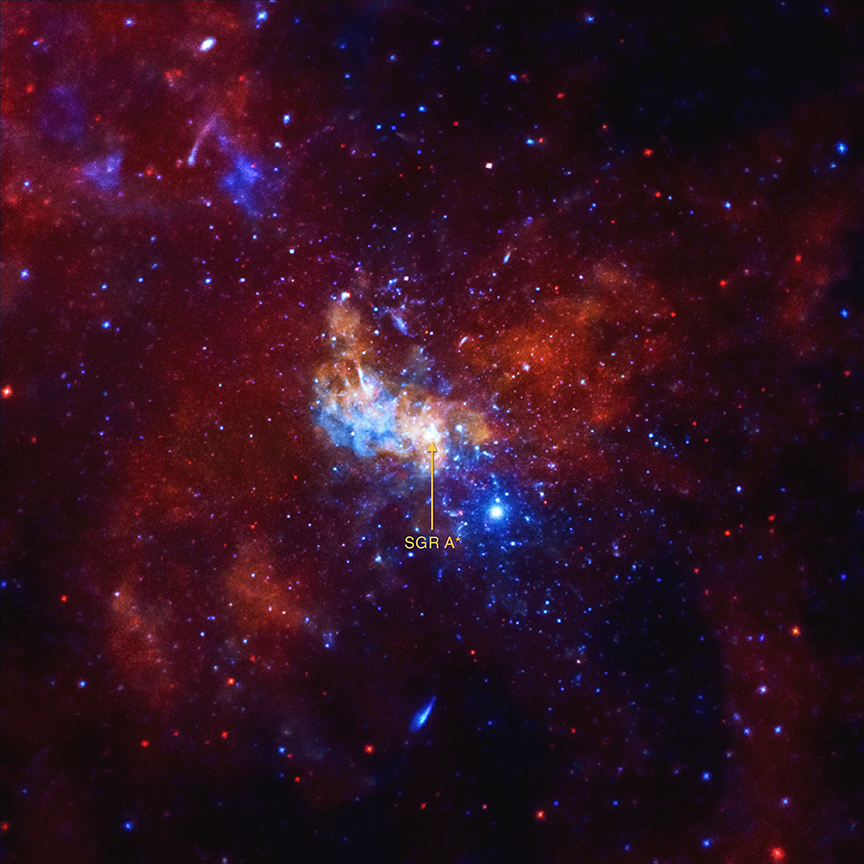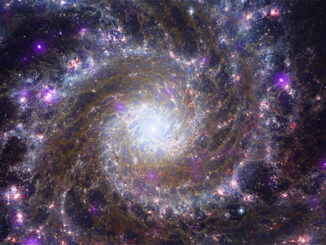A neutrino is one of the most enigmatic particles in the universe. It carries no charge and rarely interacts with protons and electrons, so it can emerge from its cosmic source and travel vast intergalactic distances without being absorbed by matter along the way or deflected by a magnetic field. Consequently, they are very difficult to detect. The IceCube Neutrino Observatory, located in Antarctica, has detected just 36 high-energy neutrinos in the four years that the facility has been operational.
Our planet is continually bombarded with neutrinos from the Sun – some 100 trillion neutrinos pass through our bodies each second – but those originating in the most powerful events in the universe like galaxy mergers, material falling onto supermassive black holes and the jets from pulsars, can be billions of times more energetic.
In their search for ultra-high energy and very-high-energy neutrinos, scientists now have evidence from three NASA satellites – the Chandra X-ray Observatory, the Swift gamma-ray mission, and the Nuclear Spectroscopic Telescope Array (NuSTAR) – that the giant black hole Sagittarius A* at the centre of the Milky Way is one such source. If confirmed, this is the first time that neutrinos have been traced back to a black hole.
“Figuring out where high-energy neutrinos come from is one of the biggest problems in astrophysics today,” said Yang Bai of the University of Wisconsin in Madison, who co-authored a study of these results published in Physical Review D. “We now have the first evidence that an astronomical source – the Milky Way’s supermassive black hole – may be producing these very energetic neutrinos.”
By correlating IceCube’s data with that from the three X-ray telescopes, scientists were able to look for violent events in space that corresponded with the arrival of a high-energy neutrino on Earth. Furtermore, several neutrino detections appeared within days of flares from the supermassive black hole that were observed with Swift and NuSTAR.
“We checked to see what happened after Chandra witnessed the biggest outburst ever detected from Sagittarius A*, the Milky Way’s supermassive black hole,” said co-author Andrea Peterson, also of the University of Wisconsin. “And less than three hours later, there was a neutrino detection at IceCube.”
“It would be a very big deal if we find out that Sagittarius A* produces neutrinos,” said co-author Amy Barger of the University of Wisconsin. “It’s a very promising lead for scientists to follow.”
The University of Wisconsin research team is still trying to develop a model for how 4-million-solar-mass Sagittarius A*, some 26,000 light-years away, might produce neutrinos. One theory states that it could happen when particles around the black hole are accelerated by a shock wave, producing charged particles that decay to neutrinos.
This new research may also shed light on the source of high-energy cosmic rays, another unresolved puzzle in astrophysics. Since cosmic ray particles are charged, they have been deflected by magnetic fields in our Galaxy which makes pinpointing their origin difficult, but charged particles accelerated by a shock wave near Sagittarius A* could be a major source of very energetic cosmic rays.




